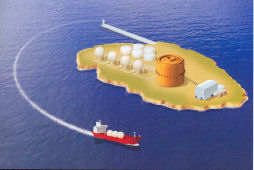Dr Bill Nuttall who holds a shared post between the Judge Business School and the Department of Engineering is part of a team who have won an award at the East of England Energy Group's (EEEGR) 3rd Annual Innovation Awards for their work on Fusion Energy.

Fusion energy, which is created by atomically combining two hydrogen isotopes at extremely high temperatures, is the holy grail of nuclear researchers. Working as an energy island, the 'Fusion Island' concept proposes a power plant built on an island, where fusion heat is used to split water, drawn from the sea into hydrogen and oxygen. On Fusion Island hydrogen is the coolant, the fuel, and the commercial product, sold in liquid form ready for transport by sea. A key innovation is that on Fusion Island the powerful superconducting magnets needed to maintain nuclear fusion might be cooled not by expensive and scarce liquid helium but by the liquid hydrogen produced in abundance on Fusion Island. Creating clean fusion energy could be a way of tackling key environmental challenges in the coming decades.
About two years ago Bill became very interested in an idea coming out of a company called 'General Atomics' in San Diego, California. They said that nuclear fusion energy might be used to split water chemically at high temperature to make hydrogen to fuel cleaner vehicles. This way of making hydrogen could be a very efficient process.
At the same time Bill was concerned that it would be difficult for fusion to be reliable enough to make electricity commercially and also that electricity companies might be nervous about investing in fusion for that reason. He published an opinion piece in 'The Engineer' saying that the oil majors would be a good choice as developers of fusion energy and they could make and distribute hydrogen (i.e. not electricity).
A little less than a year ago he was at an event sponsored by the Cambridge Environmental Initiative and heard a Cambridge colleague, and now Fusion Island co-developer, Bartek Glowacki, say that the magnets for fusion might be cooled with liquid hydrogen rather than expensive liquid helium. Bill says "I was already imagining a fusion energy system surrounded by tanks of liquid hydrogen - his new idea was so good it almost knocked me off my chair."
Later Richard Clarke at UKAEA Culham, a European centre for energy research, pointed out that fusion might also use energy from hydrogen to fire up the whole system, so breaking all connections with electricity grids with all their related problems. Richard became the third member of the team.
So the Fusion Island concept was born - a new way of thinking about fusion energy serving new markets, with the potential for investors from new sectors, and with key benefits for sustainable hydrogen production to fuel the clean cars of the future. The team published an article about the concept in 'The Engineer' magazine last November which can be read here.
Bill says "We have been aware of EEEGR for years and we respect their work and when we heard of the Innovation Awards we thought - 'perhaps they will be as excited by the Fusion Island concept as we are' - so we submitted a bid. We are very glad we did, as we received a runners up award."

